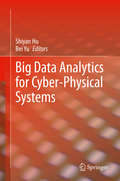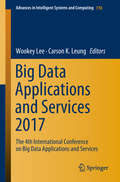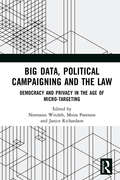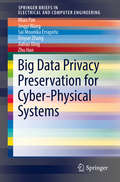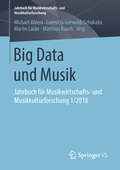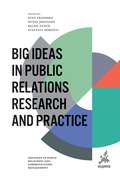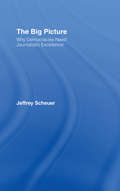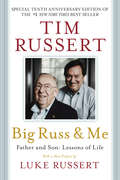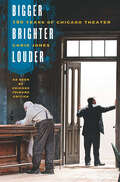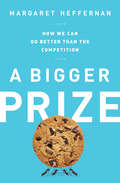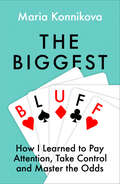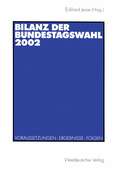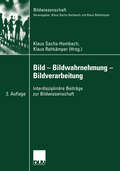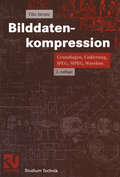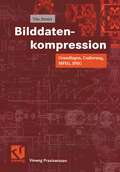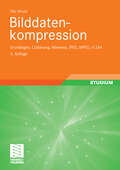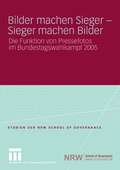- Table View
- List View
Big Data Analyses, Services, and Smart Data (Advances in Intelligent Systems and Computing #899)
by Wookey Lee Carson K. Leung Aziz NasridinovThis book covers topics like big data analyses, services, and smart data. It contains (i) invited papers, (ii) selected papers from the Sixth International Conference on Big Data Applications and Services (BigDAS 2018), as well as (iii) extended papers from the Sixth IEEE International Conference on Big Data and Smart Computing (IEEE BigComp 2019). The aim of BigDAS is to present innovative results, encourage academic and industrial interaction, and promote collaborative research in the field of big data worldwide. BigDAS 2018 was held in Zhengzhou, China, on August 19–22, 2018, and organized by the Korea Big Data Service Society and TusStar. The goal of IEEE BigComp, initiated by Korean Institute of Information Scientists and Engineers (KIISE), is to provide an international forum for exchanging ideas and information on current studies, challenges, research results, system developments, and practical experiences in the emerging fields of big data and smart computing. IEEE BigComp 2019 was held in Kyoto, Japan, on February 27–March 02, 2019, and co-sponsored by IEEE and KIISE.
Big Data Analytics for Cyber-Physical Systems
by Shiyan Hu Bei YuThis book highlights research and survey articles dedicated to big data techniques for cyber-physical system (CPS), which addresses the close interactions and feedback controls between cyber components and physical components. The book first discusses some fundamental big data problems and solutions in large scale distributed CPSs. The book then addresses the design and control challenges in multiple CPS domains such as vehicular system, smart city, smart building, and digital microfluidic biochips. This book also presents the recent advances and trends in the maritime simulation system and the flood defence system.
Big Data Applications and Services 2017: The 4th International Conference on Big Data Applications and Services (Advances in Intelligent Systems and Computing #770)
by Wookey Lee Carson K. LeungThis proceedings volume contains selected papers from the Fourth International Conference on Big Data Applications and Services (BigDAS 2017), held in Tashkent, Uzbekistan on August 15-18, 2017. Big data has become a core technology providing innovative solutions in many fields including social media, healthcare and manufacturing. The Fourth International Conference on Big Data Applications and Services (BigDAS 2017) presented innovative results, encouraged academic and industrial interaction, and promoted collaborative research in the field of big data worldwide. The conference was organized by the Korea Big Data Services Society and National University of Uzbekistan.
Big Data, Political Campaigning and the Law: Democracy and Privacy in the Age of Micro-Targeting
by Janice Richardson Moira Paterson Normann WitzlebIn this multidisciplinary book, experts from around the globe examine how data-driven political campaigning works, what challenges it poses for personal privacy and democracy, and how emerging practices should be regulated. The rise of big data analytics in the political process has triggered official investigations in many countries around the world, and become the subject of broad and intense debate. Political parties increasingly rely on data analytics to profile the electorate and to target specific voter groups with individualised messages based on their demographic attributes. Political micro-targeting has become a major factor in modern campaigning, because of its potential to influence opinions, to mobilise supporters and to get out votes. The book explores the legal, philosophical and political dimensions of big data analytics in the electoral process. It demonstrates that the unregulated use of big personal data for political purposes not only infringes voters’ privacy rights, but also has the potential to jeopardise the future of the democratic process, and proposes reforms to address the key regulatory and ethical questions arising from the mining, use and storage of massive amounts of voter data. Providing an interdisciplinary assessment of the use and regulation of big data in the political process, this book will appeal to scholars from law, political science, political philosophy and media studies, policy makers and anyone who cares about democracy in the age of data-driven political campaigning.
Big Data, Political Campaigning and the Law: Democracy and Privacy in the Age of Micro-Targeting
by Janice Richardson Moira Paterson Normann WitzlebIn this multidisciplinary book, experts from around the globe examine how data-driven political campaigning works, what challenges it poses for personal privacy and democracy, and how emerging practices should be regulated. The rise of big data analytics in the political process has triggered official investigations in many countries around the world, and become the subject of broad and intense debate. Political parties increasingly rely on data analytics to profile the electorate and to target specific voter groups with individualised messages based on their demographic attributes. Political micro-targeting has become a major factor in modern campaigning, because of its potential to influence opinions, to mobilise supporters and to get out votes. The book explores the legal, philosophical and political dimensions of big data analytics in the electoral process. It demonstrates that the unregulated use of big personal data for political purposes not only infringes voters’ privacy rights, but also has the potential to jeopardise the future of the democratic process, and proposes reforms to address the key regulatory and ethical questions arising from the mining, use and storage of massive amounts of voter data. Providing an interdisciplinary assessment of the use and regulation of big data in the political process, this book will appeal to scholars from law, political science, political philosophy and media studies, policy makers and anyone who cares about democracy in the age of data-driven political campaigning.
Big Data Privacy Preservation for Cyber-Physical Systems (SpringerBriefs in Electrical and Computer Engineering)
by Miao Pan Jingyi Wang Sai Mounika Errapotu Xinyue Zhang Jiahao Ding Zhu HanThis SpringerBrief mainly focuses on effective big data analytics for CPS, and addresses the privacy issues that arise on various CPS applications. The authors develop a series of privacy preserving data analytic and processing methodologies through data driven optimization based on applied cryptographic techniques and differential privacy in this brief. This brief also focuses on effectively integrating the data analysis and data privacy preservation techniques to provide the most desirable solutions for the state-of-the-art CPS with various application-specific requirements. Cyber-physical systems (CPS) are the “next generation of engineered systems,” that integrate computation and networking capabilities to monitor and control entities in the physical world. Multiple domains of CPS typically collect huge amounts of data and rely on it for decision making, where the data may include individual or sensitive information, for e.g., smart metering, intelligent transportation, healthcare, sensor/data aggregation, crowd sensing etc. This brief assists users working in these areas and contributes to the literature by addressing data privacy concerns during collection, computation or big data analysis in these large scale systems. Data breaches result in undesirable loss of privacy for the participants and for the entire system, therefore identifying the vulnerabilities and developing tools to mitigate such concerns is crucial to build high confidence CPS.This Springerbrief targets professors, professionals and research scientists working in Wireless Communications, Networking, Cyber-Physical Systems and Data Science. Undergraduate and graduate-level students interested in Privacy Preservation of state-of-the-art Wireless Networks and Cyber-Physical Systems will use this Springerbrief as a study guide.
Big Data und Musik: Jahrbuch für Musikwirtschafts- und Musikkulturforschung 1/2018 (Jahrbuch für Musikwirtschafts- und Musikkulturforschung)
by Michael Ahlers Lorenz Grünewald-Schukalla Martin Lücke Matthias RauchBig Data ist nicht nur Sache von Versicherungen und Internetunternehmen. Auch für die global agierende Musikwirtschaft, die in den letzten knapp 20 Jahren bereits zahlreiche Transformationen überstehen musste, werden Sammlung, Analyse und Verwertung großer Datenmengen zu einem immer zentraleren Thema. Das aktuelle Jahrbuch der Gesellschaft für Musikwirtschafts- und Musikkulturforschung versammelt hierzu unterschiedliche Ansätze und Perspektiven auf das Thema Big Data und Musik: Von den Datafication-Algorithmen Spotifys über die rechtlichen Implikationen von Music Data Mining, die Blockchain oder der Nutzung von Big Data im Artist & Repertoire Management werden zentrale Anwendungsfelder von Musik und Big Data in den Blick genommen.
Big Ideas in Public Relations Research and Practice (Advances in Public Relations and Communication Management #4)
by Finn Frandsen Winni Johansen Ralph Tench Stefania RomentiBig Ideas can do many things. They are transformative and change the way we work and communicate in organizations and societies. As Big Ideas are dynamic, they can cross borders between disciplines to create new relationships between people, organizations and countries. In applying big ideas to public relations, this volume challenges how scholars and practitioners perceive and understand public relations within an organizational setting. In thinking about the 'bigger picture', the collection expands public relations research to include more theory-building, more cross-disciplinary research, and more innovation in practice. The 12 unique contributions from scholars based in Germany, Denmark, The Netherlands, France, Romania, the UK, Finland, Portugal and the USA explore the challenges surrounding communication, management and big ideas. Some of the topics discussed include: corporate identity, millennial engagement, strategic communication in the internationalization of firms, public relations in the start-up community and, social capital.
Big Ideas in Public Relations Research and Practice: Strategic Opportunities, Innovation And Critical Challenges (Advances in Public Relations and Communication Management #4)
by Finn Frandsen Winni Johansen Ralph Tench Stefania RomentiBig Ideas can do many things. They are transformative and change the way we work and communicate in organizations and societies. As Big Ideas are dynamic, they can cross borders between disciplines to create new relationships between people, organizations and countries. In applying big ideas to public relations, this volume challenges how scholars and practitioners perceive and understand public relations within an organizational setting. In thinking about the 'bigger picture', the collection expands public relations research to include more theory-building, more cross-disciplinary research, and more innovation in practice. The 12 unique contributions from scholars based in Germany, Denmark, The Netherlands, France, Romania, the UK, Finland, Portugal and the USA explore the challenges surrounding communication, management and big ideas. Some of the topics discussed include: corporate identity, millennial engagement, strategic communication in the internationalization of firms, public relations in the start-up community and, social capital.
The Big Picture: Why Democracies Need Journalistic Excellence
by Jeffrey ScheuerFreedom of the press is the cornerstone of democracy. But, as countless recent examples of lapsed standards in the press since the Jayson Blair affair have shown, the First Amendment is no guarantee that American journalism will be first-rate. A press in crisis is a democracy endangered, argues Jeffrey Scheuer--cultural critic and author of The Sound Bite Society. In his new book, The Big Picture, Scheuer argues that in order for a democracy to thrive it is not enough for its press simply to be free--the press must be exceptional. This book explores journalistic excellence and its essential relationship with democracy, explaining why democracies depend on it and are only as good as their journalism. In The Big Picture, Scheuer explores journalistic excellence from three broad perspectives. First, from the democratic perspective, he shows how journalism is a core democratic function, and journalistic excellence a core democratic value. Then, from an intellectual perspective, he explores the ways in which journalism addresses basic concepts of truth, knowledge, objectivity, and ideology. Finally, from an institutional perspective, he considers the role and possible future of journalism education, the importance of journalistic independence, and the potential for nonprofit journalism to meet the journalistic needs of a democratic society. In lucid and accessible prose, The Big Picture provocatively demonstrates why we must all be vigilant about the quality of journalism today.
The Big Picture: Why Democracies Need Journalistic Excellence
by Jeffrey ScheuerFreedom of the press is the cornerstone of democracy. But, as countless recent examples of lapsed standards in the press since the Jayson Blair affair have shown, the First Amendment is no guarantee that American journalism will be first-rate. A press in crisis is a democracy endangered, argues Jeffrey Scheuer--cultural critic and author of The Sound Bite Society. In his new book, The Big Picture, Scheuer argues that in order for a democracy to thrive it is not enough for its press simply to be free--the press must be exceptional. This book explores journalistic excellence and its essential relationship with democracy, explaining why democracies depend on it and are only as good as their journalism. In The Big Picture, Scheuer explores journalistic excellence from three broad perspectives. First, from the democratic perspective, he shows how journalism is a core democratic function, and journalistic excellence a core democratic value. Then, from an intellectual perspective, he explores the ways in which journalism addresses basic concepts of truth, knowledge, objectivity, and ideology. Finally, from an institutional perspective, he considers the role and possible future of journalism education, the importance of journalistic independence, and the potential for nonprofit journalism to meet the journalistic needs of a democratic society. In lucid and accessible prose, The Big Picture provocatively demonstrates why we must all be vigilant about the quality of journalism today.
Big Russ & Me: Father & Son: Lessons of Life
by Tim RussertOver the last two decades, before his death in 2008 at the age of 58, Tim Russert had become one of the most trusted and admired figures in American television journalism. Throughout his career he spent time with presidents and popes, world leaders and newsmakers, celebrities and sports heroes, but one person stood out to him in terms of his strength of character, modest grace and simple decency-Russert's dad, Big Russ.In this warm, engaging memoir, a #1 New York Times bestseller upon its initial release in 2004, Russert casts a fond look back to the 1950s Buffalo neighborhood of his youth. In the close-knit Irish-Catholic community where grew up, doors were left unlocked at night; backyard ponds became makeshift ice hockey rinks in winter; and streets were commandeered as touch football fields in the fall. And he recalls the extraordinary example of his father, a WWII veteran who worked two jobs without complaint for thirty years and taught his children to appreciate the values of self-discipline, of respect, of loyalty to friends.These deep roots stayed with Russert as he forged a remarkable career, first in government and then in media, and finally in his 16 years at Meet the Press as one of the most recognized and trusted face in television news. As Russert explains, his fundamental values sprung from that small house on Woodside Avenue and the special bond he shared with his father-values he passed down to his own son, Luke. As Tim Russert celebrates the indelible connection between fathers and sons, readers everywhere will laugh and cry in identification with the life lessons of Big Russ and in mourning of Tim Russert, a big American voice in his own right.For this special 10th anniversary trade paperback edition of Big Russ & Me, Tim's son Luke will contribute an extensive introduction, commenting on his father's legacy, and on how these lessons passed down from his grandfather impact the third generation. Luke had just graduated from college in 2008 when his father passed away. Since then, he has followed in his father's footsteps, working as a special correspondent and congressional reporter for NBC news and contributing frequently to various NBC and MSNBC outlets. Despite his youth, Luke has already shown that the ideals promoted by Big Russ in midcentury Buffalo still apply in 21st century New York, and that these lessons are as relevant for us as ever.
Big Russ & Me: Father & Son: Lessons of Life
by Tim RussertOver the last two decades, before his death in 2008 at the age of 58, Tim Russert had become one of the most trusted and admired figures in American television journalism. Throughout his career he spent time with presidents and popes, world leaders and newsmakers, celebrities and sports heroes, but one person stood out to him in terms of his strength of character, modest grace and simple decency-Russert's dad, Big Russ.In this warm, engaging memoir, a #1 New York Times bestseller upon its initial release in 2004, Russert casts a fond look back to the 1950s Buffalo neighborhood of his youth. In the close-knit Irish-Catholic community where grew up, doors were left unlocked at night; backyard ponds became makeshift ice hockey rinks in winter; and streets were commandeered as touch football fields in the fall. And he recalls the extraordinary example of his father, a WWII veteran who worked two jobs without complaint for thirty years and taught his children to appreciate the values of self-discipline, of respect, of loyalty to friends.These deep roots stayed with Russert as he forged a remarkable career, first in government and then in media, and finally in his 16 years at Meet the Press as one of the most recognized and trusted face in television news. As Russert explains, his fundamental values sprung from that small house on Woodside Avenue and the special bond he shared with his father-values he passed down to his own son, Luke. As Tim Russert celebrates the indelible connection between fathers and sons, readers everywhere will laugh and cry in identification with the life lessons of Big Russ and in mourning of Tim Russert, a big American voice in his own right.For this special 10th anniversary trade paperback edition of Big Russ & Me, Tim's son Luke will contribute an extensive introduction, commenting on his father's legacy, and on how these lessons passed down from his grandfather impact the third generation. Luke had just graduated from college in 2008 when his father passed away. Since then, he has followed in his father's footsteps, working as a special correspondent and congressional reporter for NBC news and contributing frequently to various NBC and MSNBC outlets. Despite his youth, Luke has already shown that the ideals promoted by Big Russ in midcentury Buffalo still apply in 21st century New York, and that these lessons are as relevant for us as ever.
Bigger, Brighter, Louder: 150 Years of Chicago Theater as Seen by "Chicago Tribune" Critics
by Chris JonesThe first known Chicago Tribune theater review appeared on March 25, 1853. An anonymous notice, it shared the page with two other announcements—one about a pair of thousand-pound hogs set to be slaughtered and another trumpeting the largest load of lumber ever to leave Chicago. “And thus Chicago’s priorities were starkly laid out right there on that page,” begins Chris Jones in the introduction to this eyewitness cultural history. “Hog butcher for the world and windy self-promoter, specializing in commerce-driven superlatives. The arts came a poor third. Critics, and the artists they covered, would rail against that perceived set of civic priorities for years.” The Chicago of today, on the other hand, is regarded as one of the world’s premier cities for theater, and no one has had a more consistent front-row seat to its ascendance than the Chicago Tribune theater critics. Bigger, Brighter, Louder weaves together more than 150 years of Tribune reviews into a compelling narrative, pairing full reviews with commentary and history. With a sharp eye for telling details and a keen sense of historical context, Jones, longtime chief Tribune theater critic, takes readers through decades of highs and lows, successes and failures. The book showcases fascinating early reviews of actors and shows that would go on to achieve phenomenal success, including a tryout of A Raisin in the Sun with newcomer Sidney Poitier and the first major review of The Producers. It also delves into the rare and the unusual, such as a previously unpublished Tennessee Williams interview and a long conversation with Edward Albee’s mother. With reviews from Claudia Cassidy, Peregine Pickle, William Leonard, and more, many never collected before, Bigger, Brighter, Louder offers a unique lasting record of an ephemeral art and a riveting look at the history behind Chicago’s rise to theatrical greatness.
Bigger, Brighter, Louder: 150 Years of Chicago Theater as Seen by "Chicago Tribune" Critics
by Chris JonesThe first known Chicago Tribune theater review appeared on March 25, 1853. An anonymous notice, it shared the page with two other announcements—one about a pair of thousand-pound hogs set to be slaughtered and another trumpeting the largest load of lumber ever to leave Chicago. “And thus Chicago’s priorities were starkly laid out right there on that page,” begins Chris Jones in the introduction to this eyewitness cultural history. “Hog butcher for the world and windy self-promoter, specializing in commerce-driven superlatives. The arts came a poor third. Critics, and the artists they covered, would rail against that perceived set of civic priorities for years.” The Chicago of today, on the other hand, is regarded as one of the world’s premier cities for theater, and no one has had a more consistent front-row seat to its ascendance than the Chicago Tribune theater critics. Bigger, Brighter, Louder weaves together more than 150 years of Tribune reviews into a compelling narrative, pairing full reviews with commentary and history. With a sharp eye for telling details and a keen sense of historical context, Jones, longtime chief Tribune theater critic, takes readers through decades of highs and lows, successes and failures. The book showcases fascinating early reviews of actors and shows that would go on to achieve phenomenal success, including a tryout of A Raisin in the Sun with newcomer Sidney Poitier and the first major review of The Producers. It also delves into the rare and the unusual, such as a previously unpublished Tennessee Williams interview and a long conversation with Edward Albee’s mother. With reviews from Claudia Cassidy, Peregine Pickle, William Leonard, and more, many never collected before, Bigger, Brighter, Louder offers a unique lasting record of an ephemeral art and a riveting look at the history behind Chicago’s rise to theatrical greatness.
A Bigger Prize: How We Can Do Better than the Competition
by Margaret HeffernanGet into the best schools. Land your next big promotion. Dress for success. Run faster. Play tougher. Work harder. Keep score. And whatever you do-make sure you win.Competition runs through every aspect of our lives today. From the cubicle to the race track, in business and love, religion and science, what matters now is to be the biggest, fastest, meanest, toughest, richest.The upshot of all these contests? As Margaret Heffernan shows in this eye-opening book, competition regularly backfires, producing an explosion of cheating, corruption, inequality, and risk. The demolition derby of modern life has damaged our ability to work together.But it doesn't have to be this way. CEOs, scientists, engineers, investors, and inventors around the world are pioneering better ways to create great products, build enduring businesses, and grow relationships. Their secret? Generosity. Trust. Time. Theater. From the cranberry bogs of Massachusetts to the classrooms of Singapore and Finland, from tiny start-ups to global engineering firms and beloved American organizations-like Ocean Spray, Eileen Fisher, Gore, and Boston Scientific-Heffernan discovers ways of living and working that foster creativity, spark innovation, reinforce our social fabric, and feel so much better than winning.
The Biggest Bluff: How I Learned To Pay Attention, Take Control And Master The Odds
by Maria KonnikovaHow a New York Times bestselling author and New Yorker contributor parlayed a strong grasp of the science of human decision-making and a woeful ignorance of cards into a life-changing run as a professional poker player, under the wing of a legend of the game
Bilanz der Bundestagswahl 2002: Voraussetzungen - Ergebnisse - Folgen
by Eckhard JesseIn diesem Band werden alle wichtigen Aspekte der Bundestagswahl 2002 behandelt. Führende Parteien- und Wahlforscher analysieren die Vorraussetzungen der Wahlentscheidung, die neuen Trends und Entwicklungen im Wahlkampf und die Wahlkampfstrategien der Parteien. Entstanden ist eine Bilanz, die die Bedeutung der Bundestagswahl 2002 für die gegenwärtige Politik der Bundesrepublik Deutschland herausarbeitet.
Bild — Bildwahrnehmung — Bildverarbeitung: Interdisziplinäre Beiträge zur Bildwissenschaft (Bildwissenschaft #15)
by Klaus Sachs-Hombach Klaus RehkämperBildgegebende Verfahren sind heute zu einem unverzichtbaren Bestandteil der technischen Konstruktion wie der wissenschaftlichen Analyse geworden, denn sie ermöglichen, komplexe Sachverhalte zu vereinfachen und zu strukturieren. Eine Bildwissenschaft hat sich aber bisher kaum ausgebildet. Klaus Sachs-Hombach und Klaus Rehkämper stellen die Ergebnisse einer interdisziplinären Zusammenarbeit vor, um das entstehen einer allgemeinen Bildwissenschaft zu fördern.
Bild und Habitus: Sinnbildungsprozesse bei der Rezeption von Fotografien
by Burkard MichelBilder zeichnen sich durch eine eigentümliche Kombination von ikonischer Exaktheit und semantischer Unbestimmtheit aus: Obwohl auf den ersten Blick zu sehen ist, was auf einem gegenständlichen Bild ‚drauf' ist, bleibt sein Sinn oftmals offen und vieldeutig. Erst in der Interaktion mit den Rezipierenden bildet sich der Sinn - und verändert sich mit ihnen. Wie die sinnerzeugende Interaktion abläuft, untersucht Burkard Michel unter Bezug auf die Habitustheorie Pierre Bourdieus und macht sie damit für die Medienrezeptionsforschung fruchtbar. Rezeptionsprozesse auf Basis des milieuspezifischen Habitus sind demnach nicht als rationalistische Akte ‚reiner Erkenntnis', sondern als praktisches Handeln zu begreifen, das sich "jenseits von Bewusstsein und diskursivem Denken" (Bourdieu) vollzieht. Um diese präreflexive Sinnebene bei der Rezeption von Bildern empirisch zu rekonstruieren, wendet der Autor die Dokumentarische Methode nach Ralf Bohnsack in Verbindung mit dem Gruppendiskussionsverfahren exemplarisch an und entwickelt so die Umrisse einer "praxeologischen Rezeptionsforschung".
Bilddatenkompression: Grundlagen, Codierung, JPEG, MPEG, Wavelets (Vieweg Praxiswissen)
by Tilo StrutzDieses Buch befasst sich mit den allgemeinen Verfahren und Methoden der Datenkompression und geht speziell auf deren Einsatz in Systemen zur Bilddatenkompression ein. Anhand vieler Beispiele werden die Algorithmen erläutert und mit Quelltexten in der Programmiersprache C unterlegt. Den modernen Verfahren der wavelet-basierten Kompression wird große Aufmerksamkeit gewidmet. Das Buch ist als Lehrbuch und auch als Nachschlagewerk geeignet. In der zweiten Auflage wurden einige Abschnitte umstrukturiert oder ergänzt, das Kapitel zur Entropiecodierung wurde um Abschnitte zu Golomb- und Rice-Codes erweitert, in das Kapitel Präcodierung wurde eine neue Technik zur Blocksortierung aufgenommen. Die Beschreibung eines wavelet-basierten Kompressionssystems steht jetzt in einem eigenen Kapitel. Die aktualisierten Ausführungen zu JPEG 2000 bilden gemeinsam mit dem neuen Standard JPEG-LS ein weiteres Kapitel.
Bilddatenkompression: Grundlagen, Codierung, MPEG, JPEG (Vieweg Praxiswissen)
by Tilo StrutzDieses Buch befasst sich mit den allgemeinen Verfahren und Methoden der Datenkompression und geht speziell auf deren Einsatz in Systemen zur Bilddatenkompression ein. Anhand vieler Beispiele werden die Algorithmen erläutert und mit Quelltexten in der Programmiersprache C unterlegt. Den modernen Verfahren der wavelet-basierten Kompression wird große Aufmerksamkeit gewidmet. Das Buch ist als Lehrbuch und auch als Nachschlagewerk geeignet.
Bilddatenkompression: Grundlagen, Codierung, Wavelets, JPEG, MPEG, H.264
by Tilo StrutzDieses Buch befasst sich mit den allgemeinen Verfahren und Methoden der Datenkompression und geht speziell auf deren Einsatz in Systemen zur Bilddatenkompression ein. Anhand vieler Beispiele werden die Algorithmen erläutert und mit Quelltexten in der Programmiersprache C unterlegt. Den modernen Verfahren der waveletbasierten Kompression sowie den Standards zur Bild- und Videokompression wird große Aufmerksamkeit gewidmet.
Bilder machen Sieger - Sieger machen Bilder: Die Funktion von Pressefotos im Bundestagswahlkampf 2005 (Studien der NRW School of Governance)
by Moritz BallensiefenMachen sich Journalisten selbst zu Wahlkampfhelfern? Kommentieren Sie mit ihrer Bilderauswahl das politische Geschehen anstatt zu informieren? Tageszeitungen haben längst auf die veränderte Informationsaufnahme ihrer Leser reagiert. Ohne Visualisierung keine Nachricht. Daraus hat sich eine journalistische Jagd auf möglichst spektakuläre und exklusive Bildmotive entwickelt. Moritz Ballensiefen geht im Medienwahlkampf 2005 inhaltsanalytisch auf Spurensuche nach journalistischen Darstellungsmustern.

